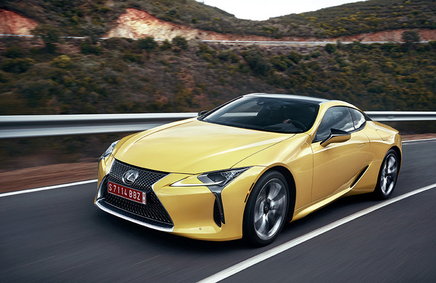The beauty and perils of spring
As an enduring annual event here, we are treated to bold and pastel hues emerging with the advent of spring. That colorful palette, made up of tulips, daffodils, and tree buds of virtually every color, is a welcome harbinger of great weather to come.
Along with that appearance of beauty, however, I notice the inevitable uptick in auto-related accidents involving pedestrians, bicyclists and motorcyclists. Hopefully, the enhanced scenery itself doesn’t lead to any of those mishaps, though even that is possible.
But mainly, those unfortunate interactions come as a result of the sheer volume increase of people and bikes (motor and pedal variety) appearing near roadways that have been the more exclusive domain of automobiles during the preceding winter months.
Still, as I drove through neighborhoods this week, I had to remind myself not to be distracted by the lovely view itself.
At the start of this season, neither the car and truck drivers nor the bikes and pedestrians have had much recent practice dealing with one another. That scenario can catch either party off guard with disastrous results. Sure, good drivers have had to be alert all winter, and did encounter pedestrians, but not in such a varietal mix.
When spring arrives, the participants in the foot, bicycle and motorcycle “brigade” is not only huge, but includes many children, dogs, strollers, and novice riders. For example, each year brings out a new group of kids who are first-time walkers or bike riders. These are the things that car and truck drivers (many who are first-timers themselves) must keep in mind when dealing with these entities. Unexpected behavior should be expected by and from everyone.
While it’s not totally incumbent upon drivers to be the most responsible party in pairings with less-protected citizens, it is a crucial element of safe interaction because drivers carry the “biggest stick.” In other words, no matter who is at fault for a collision, the car or truck is going to receive less damage than the pedestrian, bicycle or motorcycle, and inflict more upon them.
In a majority of accidents, it takes two parties exhibiting less than optimum attentiveness at the time of the crash. As a responsible driver, it will greatly lessen my chances of having such a collision if I strive to always afford proper attention to the task. That way, out of every pairing with another person or object, it’s not so likely that the two of us will have an attention lapse at the same crucial moment.
It’s hoped that pedestrians will use caution too, and not allow distraction by cell phones or “ear bud” music while amid motor vehicles. Having all senses on full alert while mixing with traffic is a survival must for walkers, runners and peddlers.
Pets and small children should be accompanied by adults when near traffic. If that’s not the case, alert drivers provide their only defense.
And worthy advice for novice bicyclists and motorcyclists is to avoid traffic early in your learning process. One of the benefits of our region is the existence of numerous roadways “off the beaten path” with few or no motor vehicles to account for. Mistakes there may not have disastrous outcomes.
Specifically for motorcyclists, especially new riders, consider taking locally-offered operational and safety courses before entering the traffic mix. In fact, it really should be mandatory for newbies, since a large number of spring/summer motorcycle accidents are one-vehicle crashes. Even experienced riders should realize that there is an annual need to reacquaint themselves with their machines in order to reestablish last season’s skill level and confidence.
Though this may all sound like common sense, it is evidently not common enough given the number of avoidable tragedies that occur every spring and summer involving cars, trucks, people, pets, and smaller vehicles.
Each spring, renewed energy abounds and we make plans to take advantage of the upcoming seasons via joyful activities. I hope everyone has a chance to do that this year without interruption by vehicle-related disasters. If we all do our part by employing “eagle eye” vigilance, we’ll help make that hope a reality.
Readers may contact Bill Love via email at precisiondriving@spokesman.com.
